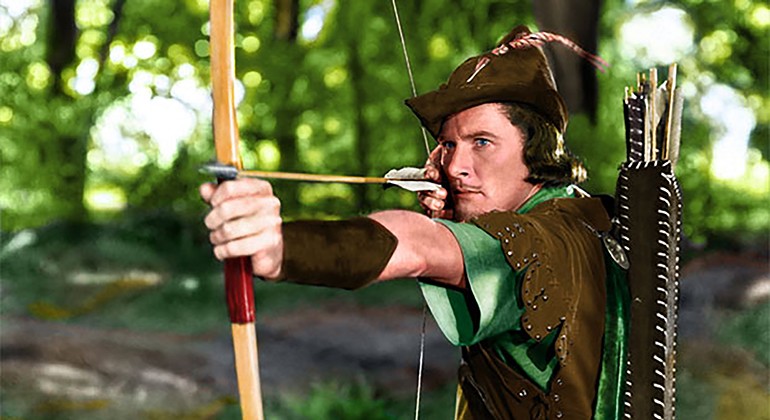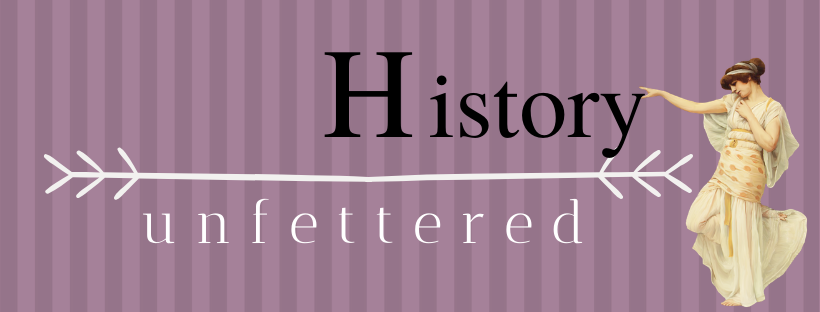Was Robin Hood Just a Story or Was He Real?

Robin Hood. It’s a name that immediately conjures up that spritely outlaw fighting for those laboring under the yoke of injustice.
It sets our imagination off down wild woodland paths and into the thicket. It takes us where the hero and his merry men live off the bounty of nature, ready to swing from trees, battle with swords, and draw their bows in aid of a helpless widow or beautiful maiden.
Ah, Robin. We may love him, but who is he? What do we really know about him? Is he pure fiction, or was there a real outlaw who spent his days doing his part to balance the gap between rich and poor?
Robin’s Literary Fame
If we look to literature, we find the first reference to Robin Hood in the late 1300s poem Piers Plowman, written by William Langland.
Piers is one of the most famous middle English poems in existence. Unfortunately, the bit about Robin Hood is pretty short. In fact, it’s just a reference to Robin Hood rhymes. However insignificant it is to the story, it’s huge to us because it lets us know that Robin Hood was well known during Langland’s lifetime.
Robin Hood developed further in the ballads of the 1400s. This is when we first find out his fugitive ways. Writings of this period include Robin Hood and the Monk (c.1450); The Lyttle Geste of Robyn Hode (c.1400); and the three stories: Robin Hoode his Death, Robin Hood and Guy of Gisborne, and Robin Hood and the Curtal Friar. (Dates for these are debatable, but certainly in the 15th century.)
In some of these tales, he is a great hero, but in others, he is involved in comic adventures. Unlike the modern version, our lovable outlaw is a member of the Yeoman class, who were mainly small landowners.
We are introduced to some of his companions at this point, such as Will Scarlet and Little John, who make their first appearance in the Geste.
Post-Medieval Retellings
Robin may have been popular during the Middle Ages, but it’s the post-medieval stories that really brought him fame.
Anthony Munday, a 16th-century playwright, wrote two Robin Hood plays, The Downfall of Robert Earl of Huntington and The Death of Robert Earl of Huntington. In these stories, the now Earl Robin has a falling out with King Richard and turns outlaw.
He sets off into the Greenwood taking the daughter of Robert Fitzwalter (AKA Marion) with him. His relationship with Marion comes in different forms over the 16th and 17th centuries, then completely disappears until the 19th Century.
Sometimes she is Maid Marion, sometimes wife, sometimes even mother to a brood of baby Robin Hoods. There are even versions that exchange her royalty for that of a helpless shepherdess.
Modern readers are probably most familiar with the 1883 version written by Howard Pyle. It was Pyle’s meticulously drawn illustrations that gave us the image of the fit, muscular Robin roaming the countryside in tights.
Pyle also introduces the idea of Robin as the great humanitarian, robbing the rich and giving to the poor. Incidentally, Pyle’s version comes with its own interesting history. You can read about that and see samples of the original here.
Will the Real Robin Hood Please Stand Up?
So where did these stories originate? Who was the real Robin Hood?
Did he even exist? It’s hard to say for sure. Robin Hood, Robe Hood, and Robhode, seem to have been common names to describe bandits, and outlaws accused of poaching.
There are also cases of 13th and 14th-century criminals deliberately taking on the name. This makes narrowing down our Robin Hood a little tricky. Having said this, here are a few men who make good candidates.
Robin of Locksley
Locksley is the name we associate most with Robin Hood, so surely that must be his name, right? Well, not necessarily.
An anonymous manuscript from 1600 places Locksley as Robin Hood’s town of birth. This probably was based on the village of Locksley in Yorkshire, but later writers changed it to the village of Locksley in Nottinghamshire.
Then again there’s the village of Loxley in Warwickshire where a Robert Fitz Odo lived during the reign of Henry II and Richard I. Fitz Odo was a knight, but no evidence indicates he was even an outlaw.
The Locksley name was probably more an invention of the ballads than fact. It grew in popularity thanks to its use by Walter Scott in his novel Ivanhoe.
Robert Hod
The Earliest possible real Robin is a mention of a fugitive named Robert Hod in the Yorkshire assize roles for 1225–1226.
He’s mentioned a few years later by the name of Hobbehod. He may also be one and the same with another outlaw Robert of Wetherby. Robert Hod was a tenant of the archbishop of York.
Early ballads say Robin Hood fought against this very archbishop, so that’s one mark in his favor. We don’t know much about Robert of Wetherby except that he was wanted as an “outlaw and evildoer of our land.”
Robert Deyville
Along with his brother, this Robert was a follower of Simon de Montfort, Earl of Leicester.
The brothers were forced to become outlaws after the death of the Earl in the battle of Evesham in 1265. Robert’s brother was pardoned, but it’s said our man Rob remained in the forests.
If this Robert isn’t our man, another of the Earls men might be. Roger Godberd was said to take off to the forest of Sherwood after the Earls’s defeat.
It’s said that while living in the forest he had a band of 100 men who would come to his aide at a moment’s notice. He was even known to get into some scrapes with the Sheriff of Nottingham.
Fulk Fiz Warin III
Fulk was friends with King John in his childhood, but the two later had a falling out.
The good king then gave away Fulks castle to another man. For some reason, Fulk didn’t take too kindly to this, and in a moment of rage killed the new tenant.
Fulk was now forced to become an outlaw and hid in the Shropshire forest. He spent his days ambushing and robbing until one lucky day who should he wander upon but King John himself.
Fulk supposedly struck a deal for a pardon with the king who of course reneged once he made it to safety. Fulk finally received a pardon in 1203.
The Evidence Is Clear
Clear as the mud on the bottom of Robin’s tights that is. Who the real Robin Hood was is anyone’s guess and people will certainly continue to debate it.
Maybe he’s one of these men or a combination of all of them. Really, it doesn’t matter. The Robin Hood Story will always be appealing because it’s a story about equality, justice, and the downfall of tyranny. Well, that and deep down we’re all suckers for a swashbuckling adventure.
Sources:
https://www.ancient-origins.net/history/unravelling-identity-real-robin-hood-002506
https://www.boldoutlaw.com/realrob/real-robin-hood.html#hobbehod
https://d.lib.rochester.edu/robin-hood/text/chandler-robin-hood-development-of-a-popular-hero
https://www.visit-nottinghamshire.co.uk/ideas-and-inspiration/robin-hood/the-real-robin-hood
Related Posts
The Days When Fashion Was Only for the Rich
In today’s world, the only thing that limits what you wear is the…
October 1, 2020How Cumbersome was Medieval Armor?
The knight in shining armor. Whatever you might think of his social skills, you’ve…
August 20, 2020



Joseph Cerrito | 3rd Sep 20
Robin Hood is real. I saw him on TV.
nicolvalentin | 12th Sep 20
I bet he has a Facebook page too. 🙂